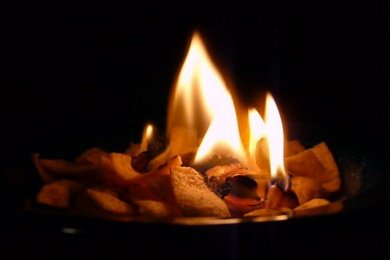What are you using and recommend to start an emergency/ cooking fire? Besides lighters or matches of course.
Thanks for input.
Eric
Thanks for input.
Eric

Follow along with the video below to see how to install our site as a web app on your home screen.
Note: This feature may not be available in some browsers.
An ax or hatchet. No matter how hard its raining, how wet it is, most wood is dry in the middle. Spit it, make shavings and use it. The finer the shavings the easier to get started. Start with find, work your way up in layers. After a bit, even wet wood will dry out and burn. Try to get coals before adding wet wood.
When I use to teach Arctic Survival, I wouldn't let people use paper, dryer lint, etc. They had to use what ever was in the woods. If you don't want to or don't happen to carry an ax or hatchet, you can do the same with a pocket knife. Find a good stick, break it, then start whittling. When you get to the dry insides, start making your shavings. The wet outside shavings you had can be added as the fire get going. Wet shavings dry out and burn faster then big chunks, adding to fuel to the fire.
Don't get hung up on the ideal you have to pack a bunch of paper, lint, or other fire starting material to get a good fire going quick.
In most of cruising, hiking, cross country skiing, trips I never carried anything but a pocket knife and I'm never without a fire.
I leave an ax at home and prefer just a good fixed blade knife and/or a Sven saw or a 12" piece of chain saw chain with webbing loops on each end for the hands, lighter and is easier to saw wood than chop it.

Fritos are the ultimate survival tool as you can eat it, light it, and use it for bait.

The thing about Kodiak Island, the rains forest of the Coast, and most of the rest of Alaska is its covered with Sitka Spruce. These spruce trees pretty much all have dead branches protected by the tree itself. As wet as it is, its always easy to gather these dead branches which make excellent tender, you don't need anything else but a match or Bic to get it started.
Surprised no one has mentioned a "pitch stick" yet...

